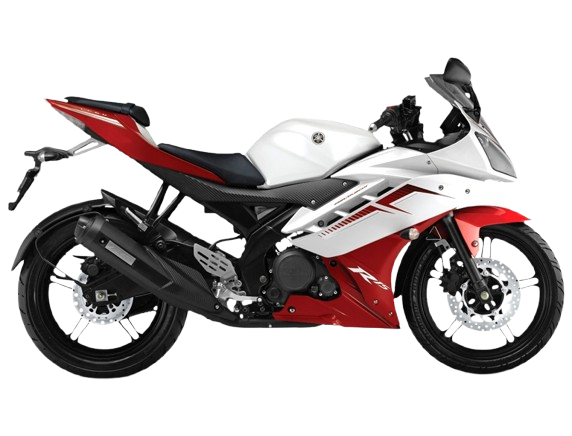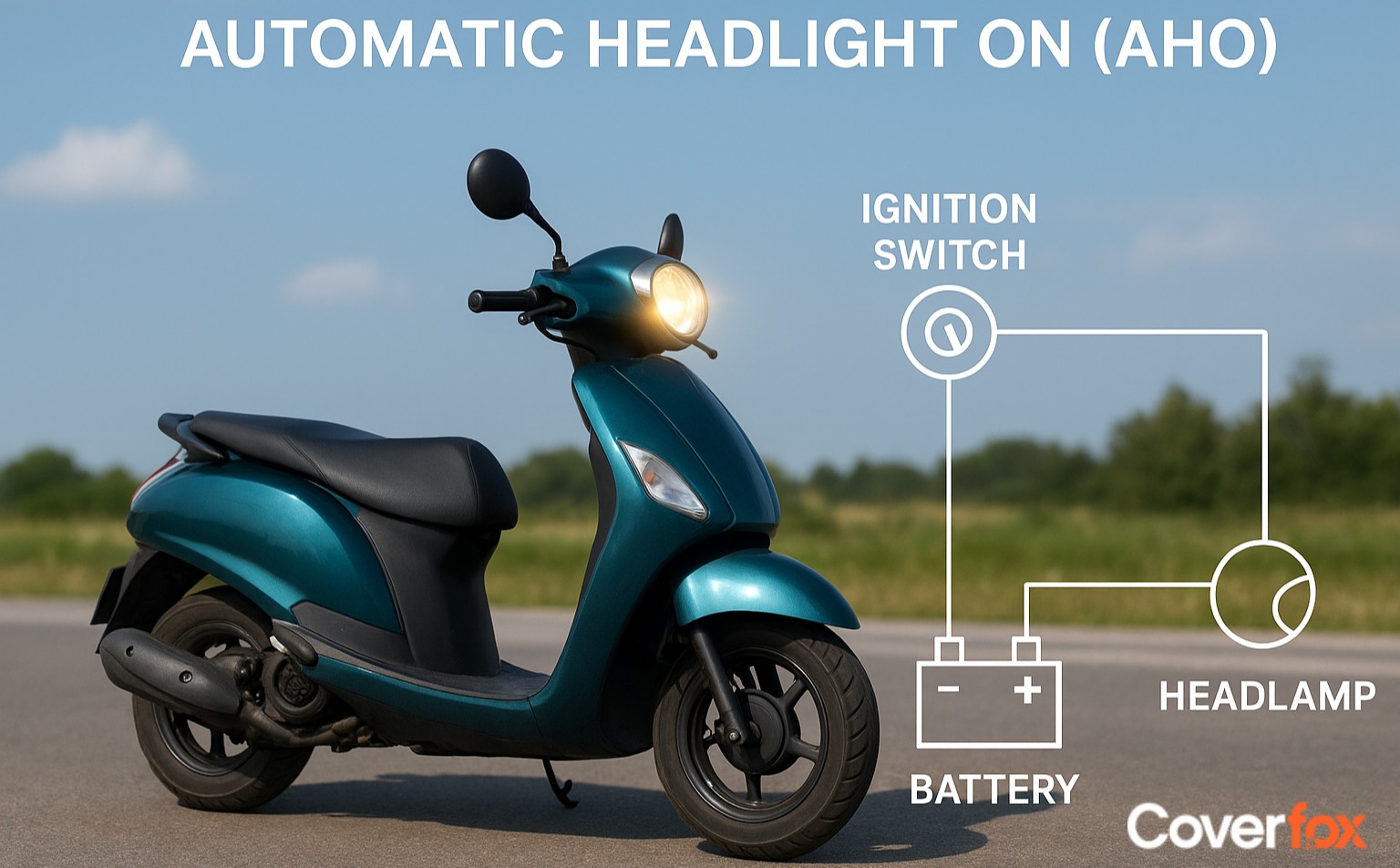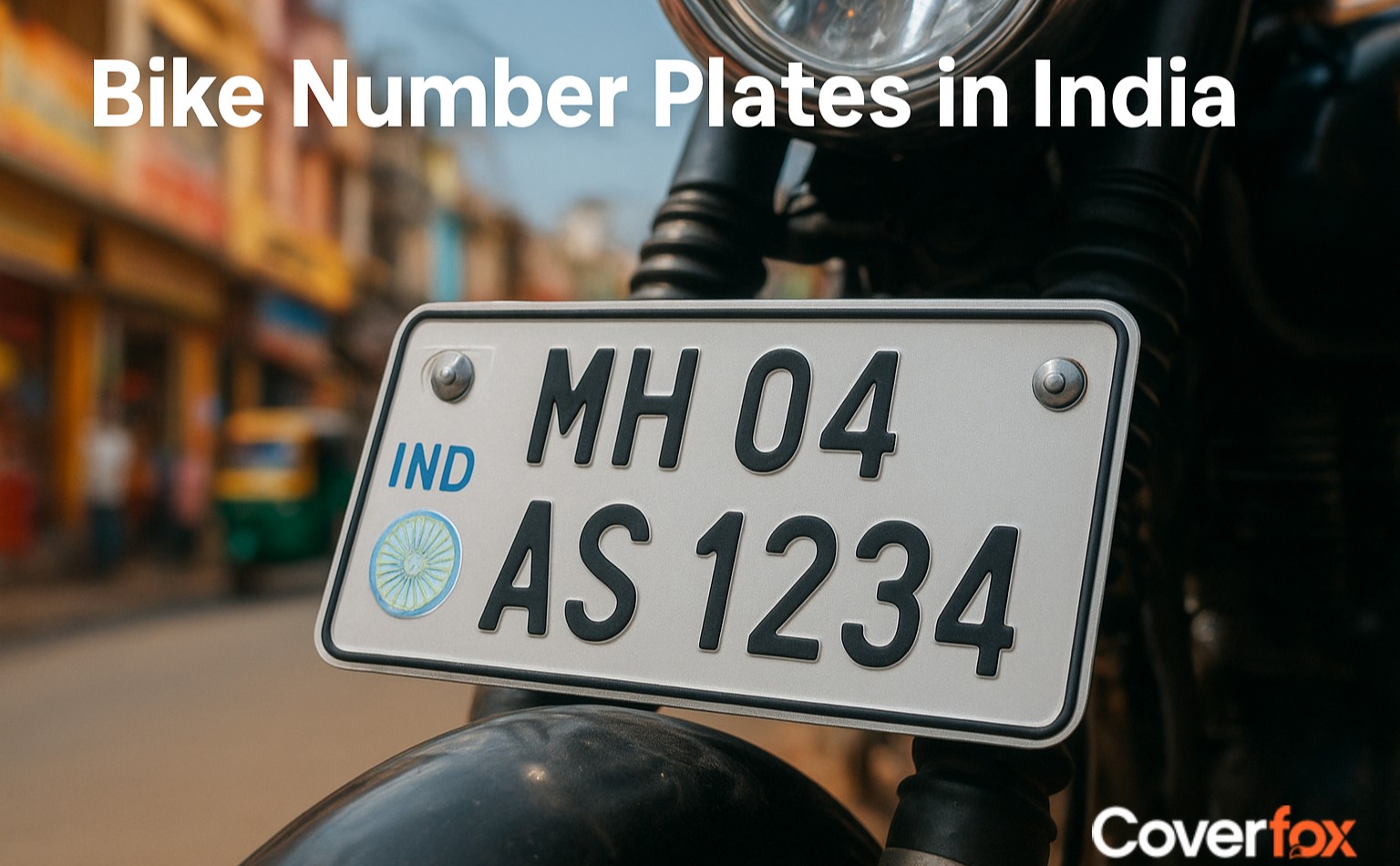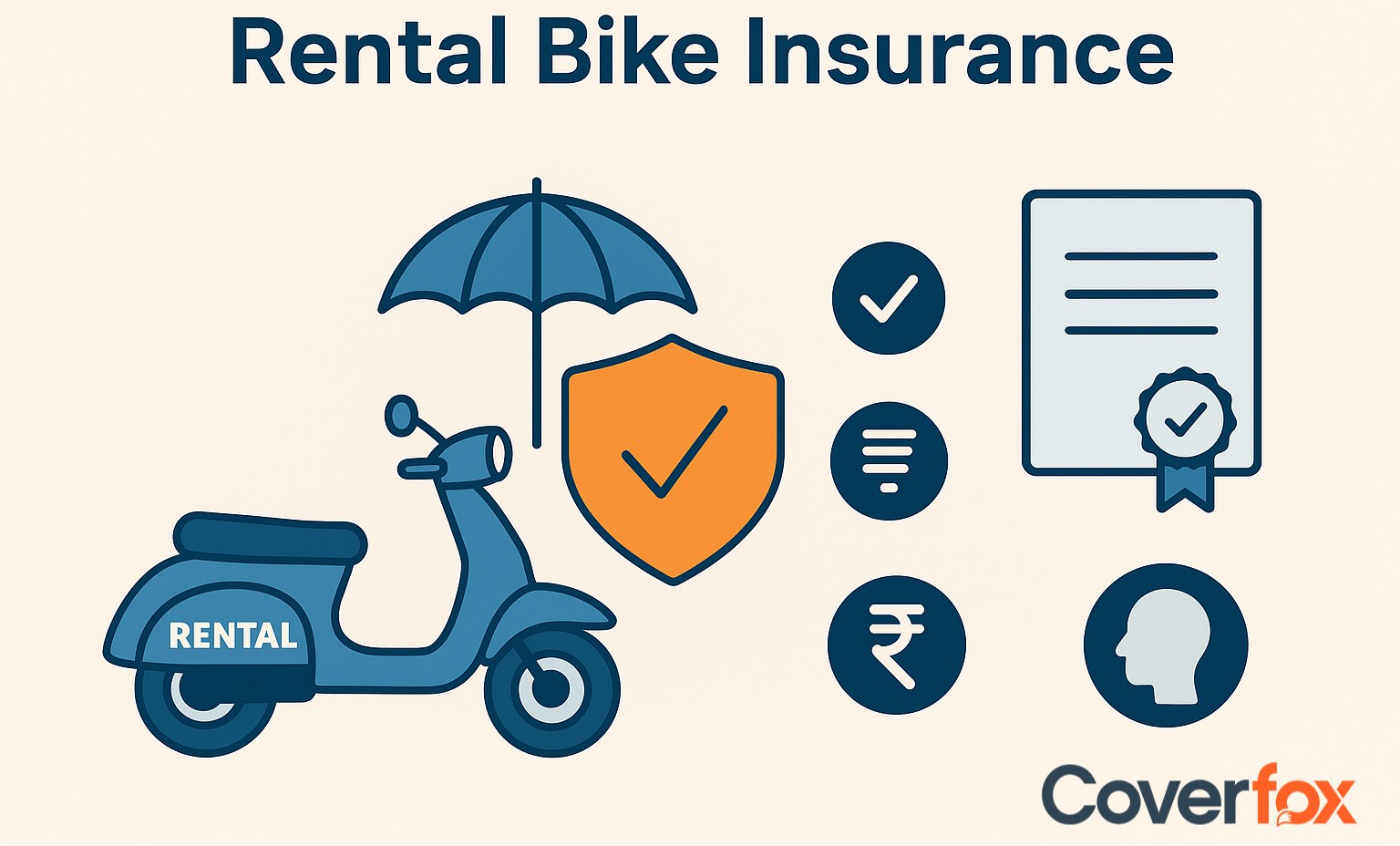When buying or renewing bike insurance, understanding the Insured Declared Value (IDV) helps you avoid both overpaying and being underinsured.
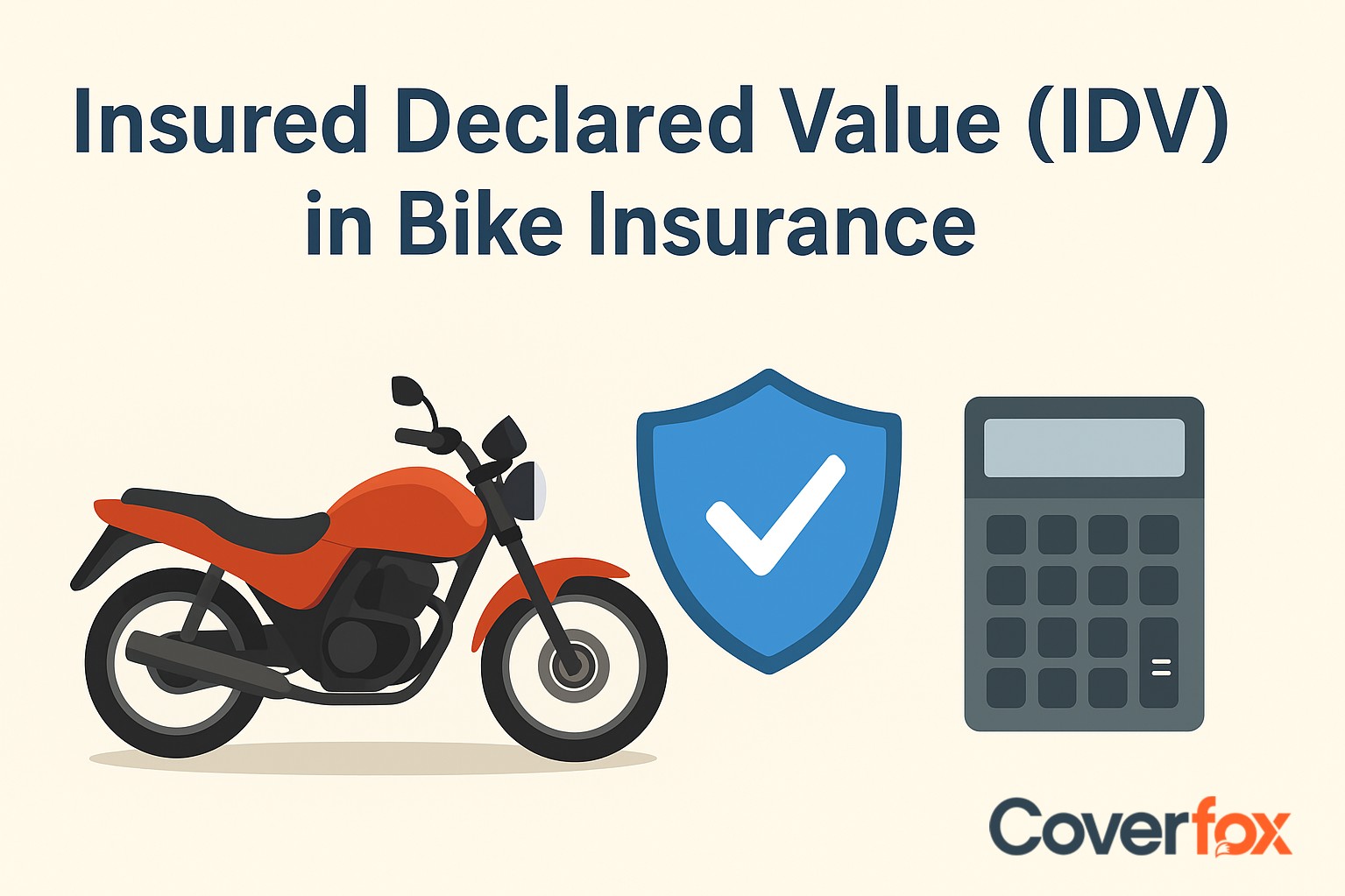
The IDV is the maximum amount that an insurance company will pay in case of a total loss or theft of your bike. It is calculated based on the current market value of your bike and is an essential component in determining the insurance premium. But how is the IDV of a two wheeler calculated, and why is it important? This guide explains how IDV is calculated as per IRDAI depreciation norms, why it matters, and how you can use an online IDV calculator to make informed coverage decisions.
What is IDV in Bike Insurance?
IDV in bike insurance stands for Insured Declared Value, which refers to the maximum sum an insurer will compensate if your bike is stolen or damaged beyond repair. It reflects the bike’s current market value after accounting for age-based depreciation, accessories, and location. Insurers determine this using the ex-showroom price and apply depreciation as per the IRDAI schedule.
However, different insurers may make minor adjustments within the allowed range based on their underwriting policies.The IDV is calculated using the manufacturer’s listed selling price of the bike (along with any insured accessories) minus the applicable depreciation. This value is important because it directly influences both the insurance premium you pay and the claim amount you can receive. Choosing the right IDV is crucial; while a higher IDV ensures better financial protection with a slightly higher premium, a lower IDV reduces the premium but may result in inadequate coverage during a claim.
Importance of Calculating IDV in Bike Insurance
Calculating the Insured Declared Value (IDV) of your bike is a crucial step when buying or renewing insurance. Knowing your bike’s IDV ensures your policy coverage stays aligned with its actual worth — not higher or lower than necessary.
Accurate Premium Calculation
Fair Compensation in Case of Loss
Easy Comparison of Insurance Plans
Smooth Insurance Renewal
The IDV directly affects your insurance premium. A higher IDV results in a higher premium, while a lower IDV lowers the premium. Calculating the IDV helps you estimate your premium correctly and ensures you are not overpaying.
By calculating the IDV, you ensure transparency in coverage. In case of total loss or theft, the payout will reflect the true market value of your bike rather than an arbitrary figure, giving you fair compensation.
Different insurers may offer varying premiums for the same coverage. Knowing your bike’s IDV allows you to compare policies effectively and choose the one that provides the best coverage at a reasonable cost.
As bikes depreciate over time, their IDV decreases. Calculating the IDV at the time of renewal ensures your insurance policy is updated to reflect the bike’s current value, preventing overpayment and maintaining adequate protection.
How to Calculate IDV in a Bike?
Calculating the IDV accurately ensures that your bike is neither underinsured nor overinsured. The calculation involves considering the bike’s ex-showroom price, any accessories, and depreciation based on the bike’s age. The following are the steps to calculate IDV:
1. Start with the Ex-Showroom Price
Take the manufacturer’s listed selling price of the bike as the base value.
2. Add the Cost of Accessories (if insured)
Include the price of any additional accessories that you have opted to insure.
3. Subtract Depreciation
Deduct depreciation based on the age of the bike. Standard depreciation rates are fixed by IRDAI:
- Less than 6 months old: 5%
- 6 months to 1 year: 15%
- 1–2 years: 20%
- 2–3 years: 30%
- 3–4 years: 40%
- 4–5 years: 50%
Calculate the Final IDV
The resulting value after adding accessories and subtracting depreciation is the IDV, which determines both your insurance premium and the claim settlement in case of total loss or theft. Here’s an example of calculating IDV for a bike.
Suppose you have a bike with an ex-showroom price of ₹1,00,000 and ₹5,000 worth of accessories that you want to insure. The bike is 2 years old.
- Start with Ex-Showroom Price: ₹1,00,000
- Add Accessories: ₹1,00,000 + ₹5,000 = ₹1,05,000
- Subtract Depreciation: For a 2-year-old bike, depreciation is 20% → 1,05,000 × 20% = ₹21,000
- Final IDV: ₹1,05,000 − ₹21,000 = ₹84,000
So, the IDV of your bike is ₹84,000. This value will be used to determine your insurance premium and the payout in case of theft or total loss.
You can also show how IDV changes with age in a short example:
- Bike <6 months old → IDV = ₹95,000
- Bike 1–2 years old → IDV = ₹84,000 (as calculated above)
- Bike 3–4 years old → IDV = ₹63,000
How to Use the IDV Calculator?
Using an IDV calculator is a straightforward process. Most insurance companies have an IDV calculator on their website, and you can also find third-party IDV calculators online. To use an IDV calculator, you will need to provide the make and model of your bike, the year of manufacture, and the city where it is registered. Once you enter this information, the IDV calculator will provide you with the current IDV of your bike and an estimate of the insurance premium.
How does IDV affect Bike Insurance Premium?
The Insured Declared Value (IDV) plays a major role in determining the premium of your bike insurance. It represents the current market value of your bike, and since the insurer’s liability in case of theft or total loss is based on this value, the IDV directly influences the premium you pay. Choosing the right IDV ensures that you are neither overpaying on your insurance nor underinsured during a claim. The following are how IDV affects your premium:
Higher IDV Means Higher Premium
Lower IDV Means Lower Premium
Impact on Claim Settlement
Premium Adjustment During Renewal
A higher IDV indicates a higher market value of your bike. Since the insurer may have to pay more in case of a claim, the premium charged will be higher.
Conversely, a lower IDV reduces the insurer’s potential payout, resulting in a lower insurance premium.
While a lower IDV can save money on premiums, it may lead to inadequate compensation during a total loss or theft, as the claim will be limited to the chosen IDV.
As a bike depreciates over time, its IDV decreases each year. Updating the IDV during policy renewal ensures that your premium reflects the bike’s current value.
Tips for Choosing the Right IDV for Your Bike
Selecting the right Insured Declared Value (IDV) for your bike is crucial to ensure that you are adequately covered in case of theft or total loss, without overpaying on your insurance premium. Considering factors like the bike’s age, depreciation, and differences among insurance providers can help you make an informed decision.
Consider the Age of Your Bike
The IDV decreases as your bike gets older due to depreciation. For older bikes, choosing a lower IDV is recommended to avoid paying unnecessarily high premiums while still maintaining adequate coverage.
Choose a Reasonable Depreciation Rate
Depreciation directly affects the IDV calculation. Ensure that the rate used is reasonable and aligned with standard IRDAI guidelines so that your coverage reflects the true market value of your bike.
Compare IDVs from Different Insurance Companies
Different insurers may offer slightly different IDVs for the same bike. Comparing these options allows you to choose the insurer that provides the best coverage at the most affordable premium, ensuring value for your money.
Conclusion
The IDV calculator is an essential tool in bike insurance that helps in determining the insurance premium and ensuring transparency in insurance coverage. By using an IDV calculator, you can accurately determine the IDV of your bike and choose the right insurance coverage for your bike. It is recommended to use an IDV calculator when buying or renewing bike insurance to ensure that you are getting the best value for your money. So, the next time you are looking for the cheapest bike insurance, don't forget to use an IDV calculator to get the best deal.
Recommended Read:
Frequently Asked Questions
How much IDV to choose for a bike?
Choose an IDV that’s within ±10% of your bike’s current market resale value to ensure adequate protection.
What is the IDV rule for bikes?
IDV is calculated as the bike’s ex-showroom price plus insured accessories minus depreciation, following IRDAI guidelines.
Should I take a higher IDV or not?
While a higher IDV ensures higher claim amounts, it will increase the bike insurance premium price. Ensure you maintain a proper balance between insurance premiums and claim settlements.
How do I find my IDV?
You can find it using an online IDV calculator, checking your insurance policy, or applying the standard formula.
Can I increase the IDV of my bike?
Yes, with insurer approval, especially if adding accessories or reflecting any increase in the bike’s value.
Can I change the IDV while renewing my policy?
Yes, IDV should be updated at renewal to match the bike’s current market value and ensure accurate premium calculation.
Is it possible to change the IDV after purchasing the policy?
Generally, IDV can’t be changed mid-term unless approved by the insurer for additions or modifications.
